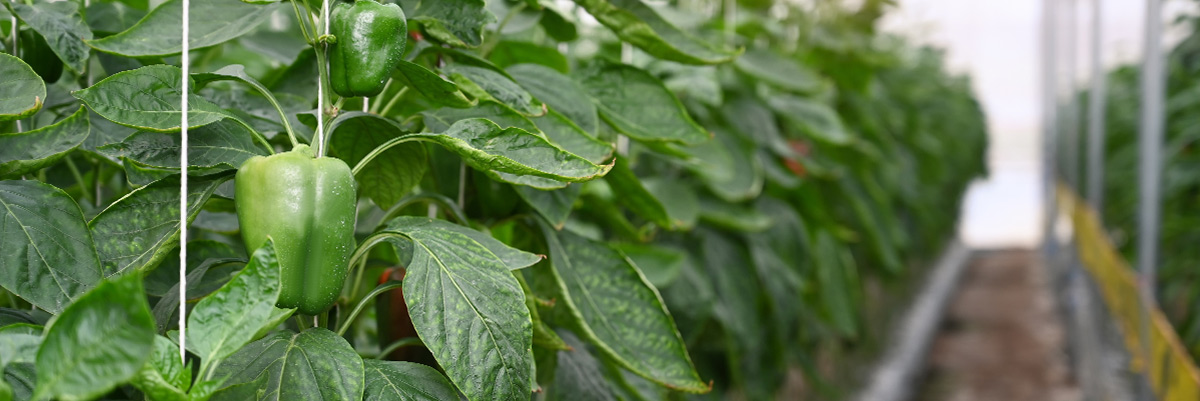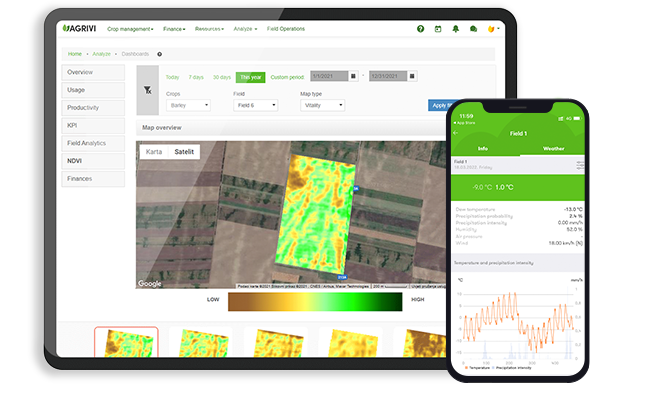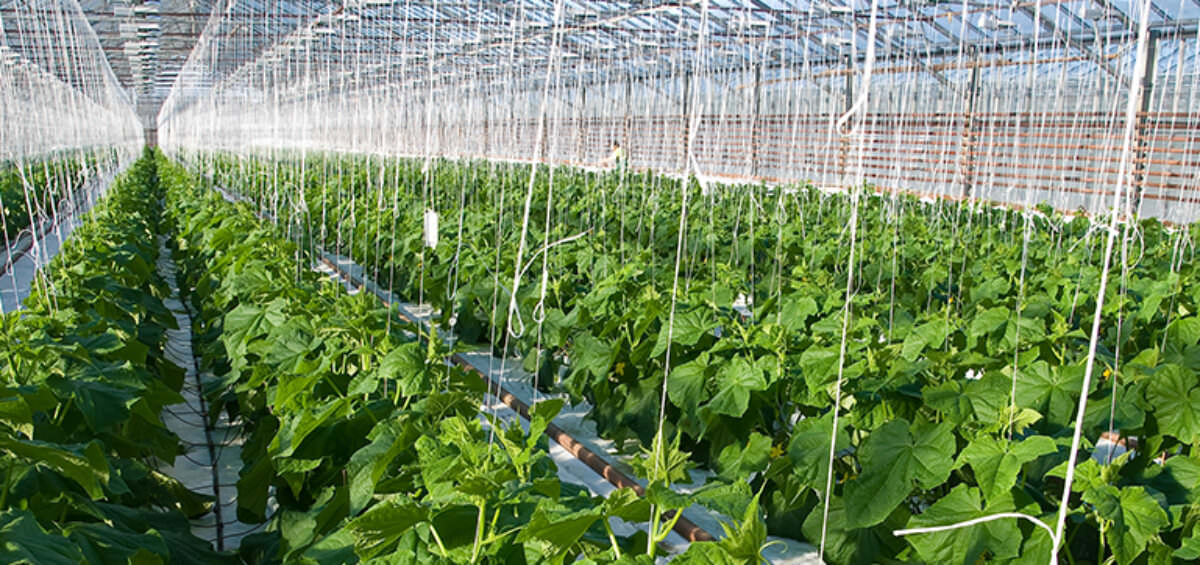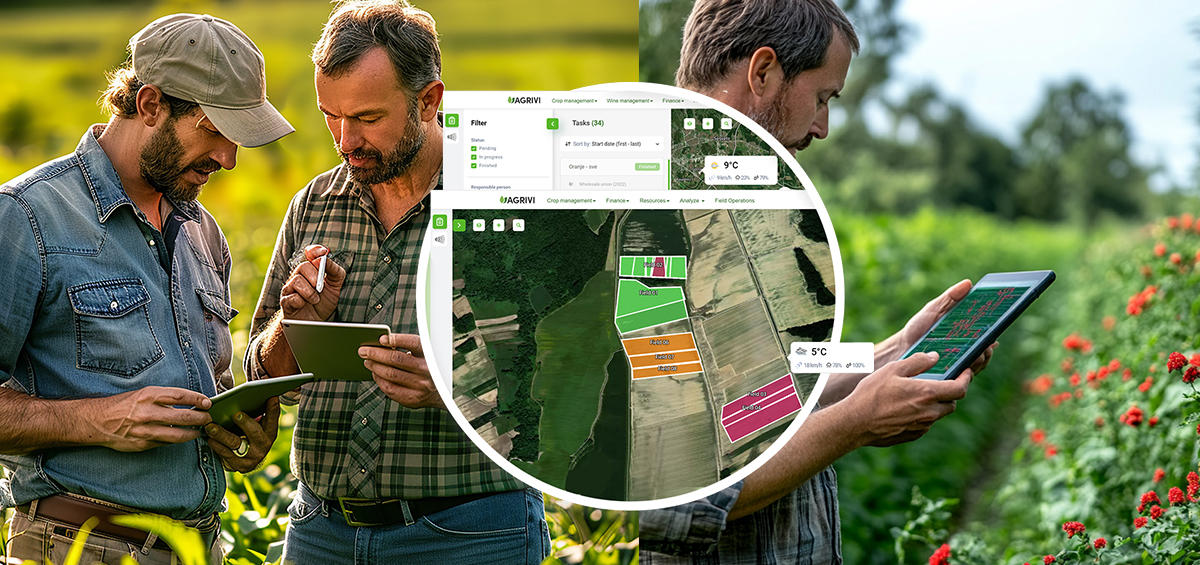Faced with increasing weather unpredictably, many growers are erecting greenhouse structures to grow their crops and even raise animals. When combined with farm management software for highly efficient operations, new technology in greenhouse structures and controlled environment growing techniques represent a scalable solution to sustainable food production. No matter what the weather does.
This guide is meant to assist farm enterprises in mitigating weather limitations and managing and scaling their agricultural production using covered greenhouse structures.
Table of Contents
How Does Weather Affect Farming?
Extreme weather events and even slightly shifting climate conditions hurt agricultural production.
Adverse weather conditions and climate disasters in 2021 left U.S. crop and livestock farmers reeling from over $21.5 billion in production loss. Rising temperature extremes between 1991 and 2017 caused farm insurance loss payouts to increase by $27 billion.
Floods and droughts are the most immediately impactful weather events, typically causing direct production losses. However, weather conditions impact farming in many less obvious or secondary ways.
For instance, a persistent wet and cool spring may not result in flooding but still prevents a farmer from being able to plant their crops when they normally do in the spring. Or, wet conditions may negatively affect critical early plant growth and stress young plants, leaving them susceptible to disease outbreaks and pest predation. Early fall cold snaps may kill a crop before it reaches maturity, while overly hot temperatures during the growing season can severely affect crop growth.
And it’s not just crops. Livestock production is also affected by extreme weather events; drought is particularly tough on the cattle industry because it severely restricts the growth of grasses and forages for pasture grazing. But even small livestock, like chickens for eggs and meat production, are susceptible to temperature extremes.
The most significant advantage of greenhouse farming is the ability to control the greenhouse environment and greenhouse temperatures to support the growth of high-quality crops, even on a year-round cycle.
Climate Change, Sustainability and Greenhouse Farming
While extreme weather conditions have always been part of farming, global warming caused by increasing greenhouse gases in our atmosphere is contributing to more frequent and extreme unfavorable weather events and threatening global food security.
According to the United Nations, the planet is averaging 1.1 degrees Celsius above pre-industrial temperatures. While that may not seem like a lot, increased air temperatures change traditional weather patterns, causing more catastrophic heat waves, extreme precipitation events and other weather-induced events, like rising sea levels from melting glaciers. All these events make it harder for farmers to grow crops in traditional ways.
At the same time, agricultural production and farm practices contribute to the climate change problem. Traditional farming practices release carbon dioxide and other potent greenhouse gases like nitrous oxide and methane into the atmosphere. About one-third to one-quarter of the planet’s annual greenhouse gases are contributed to the food supply chain. Consumers and food supply companies are no beginning to demand a more sustainable food supply chain supporting healthy environments and ecosystems.
Essentially farmers and growers are both adversely affected by the problems resulting from climate change while also being part of the reason climate change is occurring in the first place.
Greenhouse farming is seen as one solution to the climate change problem.
Greenhouse structures can mitigate high and low temperatures while growing food in regions where food production wasn’t previously possible, thereby reducing carbon emissions due to transportation, lessening the impact of supply chain shocks, and conserving water and nutrient use as compared to traditional agricultural production. Also, growers can produce a larger volume of food in a smaller greenhouse space than outdoor production models, reducing the pressures to convert forests and prairies into farmland and maintain those ecosystems as critical carbon sinks.

Greenhouse Farming
Controlled Environment Agriculture Versus Greenhouse Farming
Controlled environment agriculture (CEA) and greenhouse farming are interchangeable terms. However, they have some key differences.
CEA controls all aspects of growing, including temperature, humidity, sunlight, water, nutrition and even the planting material (aka soil). A CEA grow is entirely indoors, like in a warehouse, uses a soilless (often hydroponic) method of growing and utilizes LED lighting to simulate sunlight and induce photosynthesis. But a major disadvantage of CEA is the high electricity costs to operate the LED lighting system.
Greenhouses are a type of CEA but also take advantage of natural sunlight by covering the structure with some see-through material, such as vinyl polyethylene, polycarbonate, fiberglass or glass. Depending on the style of greenhouse, all the components seen in a CEA grow can also be incorporated into a greenhouse farming operation. There are even hydroponic farmers operating out of greenhouse structures.
The big advantage of greenhouses is their ability to offset their electricity costs by using natural sunlight as their primary light source in the greenhouse environment. Even so, some greenhouse structures also have LED lights included to provide additional lighting beyond natural sunlight during times of the year when natural sunlight is limited.
Types of Greenhouse Farming
Greenhouse farming can be accomplished using multiple types of structures, depending on the goal and needs of the farming operations. They vary depending on the system, the material used to cover them and the construction technique.
Simple greenhouse structures can be built at a relatively small expense, helping small, beginning farmers and smallholder farms in developing nations extend their season and produce more food. Simple greenhouse structures can be built for just a few thousand dollars depending on the size and materials needed.
At the other extreme are high-tech controlled greenhouse structures replicated and managed at scale across multiple locations using farm management software. Commercial greenhouses can cost millions of dollars to build and are typically installed with high-tech management systems, including heat and humidity control, lighting, drip irrigation and fertigation, misting systems and automated benching systems for moving potted plants.
Hoop Houses and Poly Tunnels
Hoop houses, also known as polytunnels, are greenhouses built on a hoop.
The hoop frame can be made of any appropriate materials. Bamboo is traditionally used in hoop houses built in regions of the world where bamboo grows abundant. PVC pipe or metal piping are also commonly used.
Because of the hoop frame, hoop houses must be enveloped with a flexible material, typically a 6-mil polyethylene plastic that resists UV degradation. The plastic will eventually need to be replaced, although it may last many years.
Hoop houses are relatively inexpensive to build and can be erected as temporary, seasonal structures or even designed to be portable. Many hoop houses are built so side walls can be lowered and raised, which allows natural airflow to lower temperatures and reduce humidity. Because of their low cost, flexibility and ease of construction, hoop houses are popular structures for lower budgets and simpler management goals. However, hoop house structures can be adapted with high-tech innovations, such as complex HVAC, irrigation and nutrient management systems, to meet commercial enterprise needs.
Polycarbonate and Glass Houses
Because of the solid nature of polycarbonate and glass, greenhouses built with these materials are built on structures with flat or angular roofs, not hoop frames.
Polycarbonate and glass are more expensive to install but longer-lasting than plastic-covered hoop houses. They are more commonly seen in commercial greenhouse house enterprises.
The frame configurations for a polycarbonate or glass house come in many forms, including gable, flat arch and gothic styles. Sometimes, a greenhouse might be installed with polycarbonate side walls but a polyethylene roof.
Shade Structures and Screen Houses
Shade structures are used to cool temperatures and limit the sunlight a crop receives. Shade structures are beneficial for fast-growing greens, such as lettuce or baby salad greens, susceptible to sweltering weather.
Shade structures are covered with a woven material that blocks sunlight. Because the material doesn’t tear as plastic does, it can be built over hoop frames or frames with more angular edges. In some cases, greenhouse operators will cover (and uncover) an already existing greenhouse structure with shade cloth, thereby turning their greenhouse from an area that captures sunlight to increase temperatures during cold weather to one that shades sunlight and decreases temperatures during hot weather.
Shade structures are also helpful in small animal husbandry as they protect livestock like chickens and turkeys from heat waves.
Screen houses follow the same concept as shade houses; only they are covered with a tightly woven mesh screen designed to keep out pests. Screen houses are helpful in areas with serious pest problems or with high-value crops susceptible to pest pressure (like cannabis).
Greenhouse Farming: Pros and Cons?
Like any new farming enterprise, there are pros and cons to greenhouse farming to consider.
Pros of Greenhouse Farming
- Extreme weather conditions like windstorms, drought, cold snaps and heat waves are mitigated.
- Extend seasonality of crop production.
- Higher-yielding crops and stable crop production.
- Easier pest management and good protection from destructive animals like deer or rabbits.
- Supports growing high-value crops and hard-to-find plant species.
- Water consumption, pesticide and fertilizer use can be reduced.
- Maximum profit in a small space.
Cons of Greenhouse Farming
- Production costs are expensive.
- High up-front costs to build the structure.
- No natural pollination.
- May need special permitting.
- Disease pressure can be high.
- A significant knowledge level is required.
- Production is limited to high-value crops.
What Elements Do Greenhouse Farming Involve?
Before venturing down the path of greenhouse farming, it is crucial to consider your business goals and all the potential elements involved in building, maintaining and running a profitable greenhouse farming business.
First, consider all the essential elements of greenhouse farming and how they relate to your business goal. Those elements include:
- Shape of the structure
- Lifespan and life-cycle of the structure
- Cover material
- Size of the farm
- Level of farm management technology
Once you have your primary business goals for your greenhouse farming operation, review the variables that will affect your greenhouse structure. These variables include:
- The amount of sunlight
- The amount of natural ventilation
- The size of the farm
- Condensation run-off
- Efficiency of materials
- Costs
Farm Management Software and Greenhouse Farming
Farm management software (FMS) goes hand-in-hand with commercial greenhouse operations, especially for farm enterprises managing multiple greenhouse operations in different locations.
AGRIVI’s farm management system jointly manages dislocated farms, connects inventory from warehouses and staff work orders, and connects the rest of the agri-supply chain with the greenhouse production center. AGRIVI also supports automation of greenhouse functions, like irrigation, HVAC systems and lighting controls.
Watch the video and discover more:





